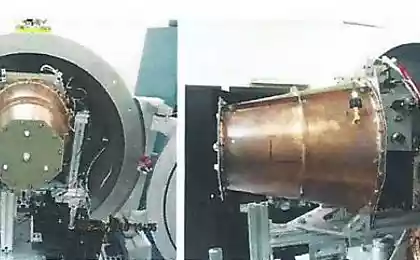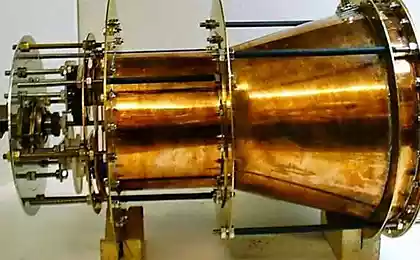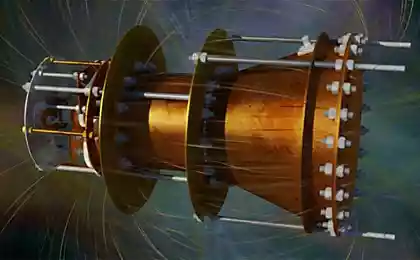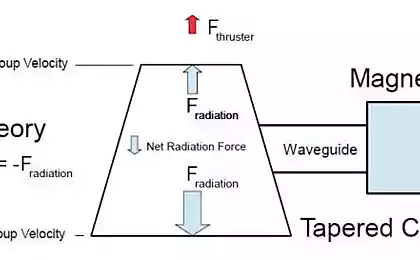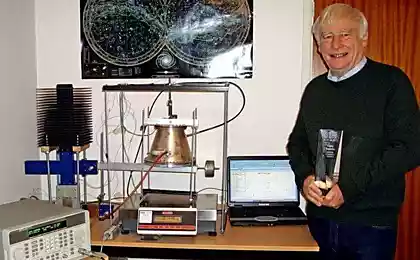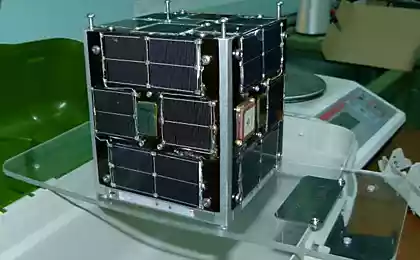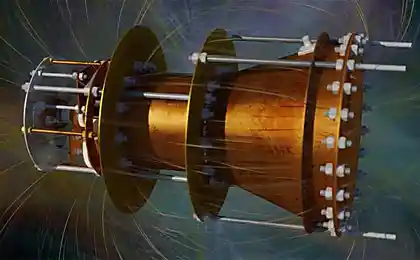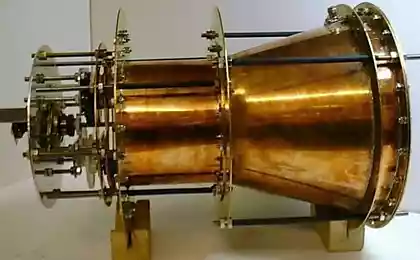518
Engine EmDrive will test in space
Experts and enthusiasts from 2003 are arguing about the possibility of the existence of a hypothetical "magic" electromagnetic EmDrive engine. The principle of its operation is very simple: the magnetron generates microwaves, the energy of oscillation stored in the high q resonator, and the existence of standing wave of electromagnetic oscillations in a closed cavity of a special form is the source of thrust. This creates thrust in a closed loop, that is, the system is completely isolated from the external environment, without exhaust.
On the one hand, this engine seems to be breaking the law of conservation of momentum, as indicated by many physicists. On the other hand, British inventor Roger Scheuer (Roger Shawyer) strongly believes in the performance of his EmDrive — and he has many supporters . Tested on the Earth seems to confirm the efficiency of the EmDrive.
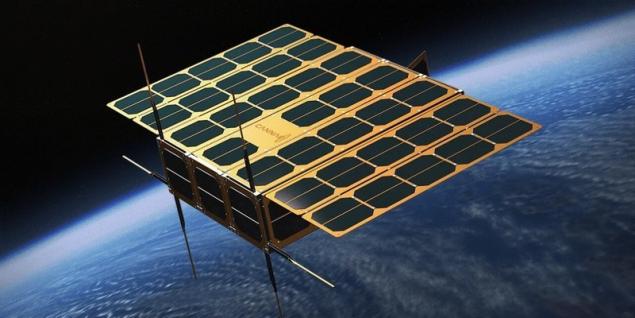
The satellite company Cannae of the six CubeSat units.
It's time to put an end to disputes.
The final point in the debate intends to put Petta, Guido (Guido Fetta) — associate cholera and designer of another hypothetical engine Cannae Drive, which works on the same principle: generating microwaves and creating thrust in a closed loop without any exhaust.
17 Aug 2016 Guido Petta announced that he intends to run the experimental sample of the Cannae Drive to orbit and test it in action. Guido Petta is the Executive Director of the company Cannae Inc. Now the company Cannae Inc. licensed the technology for the electromagnetic motor of the firm Theseus Space Inc., which will lead to low-earth orbit satellite CubeSat.
Among the founders of the company Theseus Space — she Cannae Inc., as well as little-known companies LAI International, AZ and SpaceQuest.
Launch date yet to be announced. Perhaps the enthusiasts will be able to collect the money and build experimental apparatus in 2017.
The only task of this satellite is testing the engine Cannae Drive for six months. The satellite will try to move through the electromagnetic thrust Cannae Drive.
The Cannae Drive developers claim that their engine is able to generate thrust up to a few Newtons and "higher levels", which is better suited for use in small satellites. The engine does not need fuel, no exhaust.
The engine capacity of the satellite is CubeSat — no more than 1.5 units, that is, 10×10×15 cm power Source — less than 10 watts. The satellite will consist of six units.
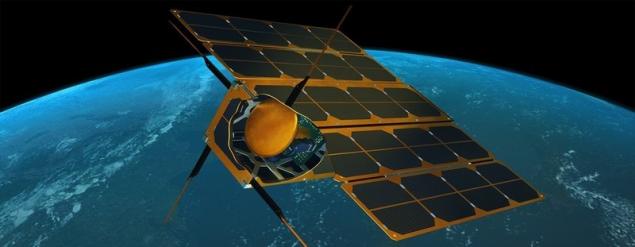
The satellite company Cannae
Immediately after the successful demonstration in orbit, the company Theseus Space intends to offer a new engine to third-party manufacturers for use on other satellites.
According to the calculations of Cannae, more massive version of the electromagnetic motor weight of 3,500 kg is able to deliver a weight of 2000 kg at a distance of 0.1 light-years in 15 years. The total mass of such a device together with the cooling systems and other parts will be 10 tons.
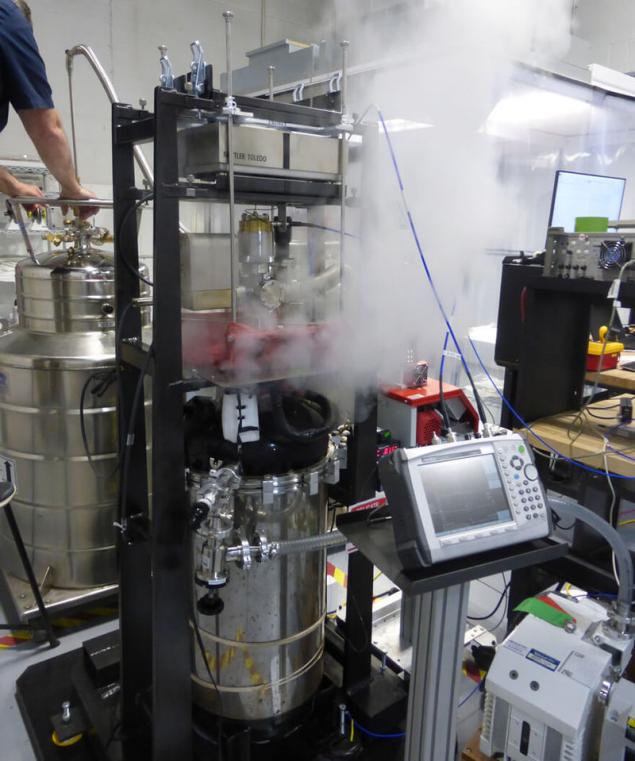
Testing electromagnetic motor Cannae with helium cooling
If the efficiency of the engine is confirmed as a result of reliable, repeatable scientific experiment, scientists will have to find an explanation for this phenomenon. The Roger Scheuer suggests that the principle of operation of the engine based on the special theory of relativity. The motor converts electricity into microwave radiation that is emitted inside a closed conical cavity, which leads to the fact that microwave particles attach to the larger, flat part of the surface of the cavity, more pressure than in the narrower end of the cone, and thereby create thrust.
Scheuer is convinced that such a system is not contrary to the law of conservation of momentum.
Guido Petta offers a similar explanation in the description of U.S. patent No. 20140013724, mentioning the Lorentz force — the force with which the electromagnetic field acts on a point charged particle.
NASA researchers experiencing EmDrive, assuming that the thrust is created by the "quantum vacuum virtual plasma" particles that appear and disappear in a closed loop space-time. That is, the system is not really isolated, so it does not violate the law of conservation of momentum due to the effects of quantum physics.
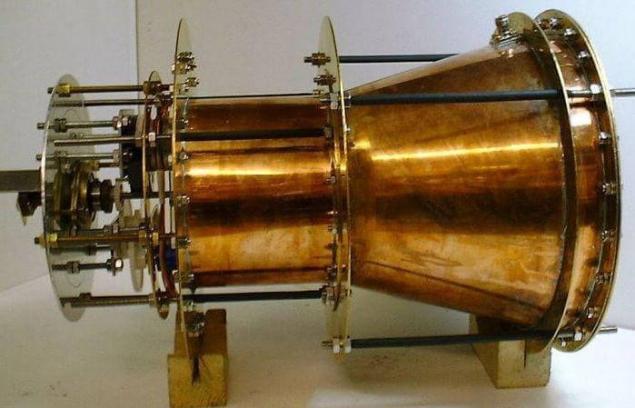
EmDrive
Development EmDrive generally ignored by the scientific community, although some experiments are still being carried out. For example, in 2012 a group of Chinese physicists has published the results of the measurement of electromagnetic thrust of the engine, which amounted to 70-720 mn at a power of microwave emitter 80-2500 W, with measurement error less than 12%. This slightly exceeds the thrust of the ion engine.
Enthusiasts believe that if EmDrive works, it will become possible to create not only an efficient space engines and flying cars and ships, planes — all modes of transportation on electromagnetic propulsion.
Company Cannae — not the only one who wants to check the operation of the electromagnetic motor in space. German engineer Paul Kocyla (Paul Kocyla) has designed a small pocket EmDrive, and is now collecting money in the framework of a crowdfunding campaign. To launch a prototype into space on a mini-PocketQube satellite takes 24 200 euros. In three months managed to raise € 585.
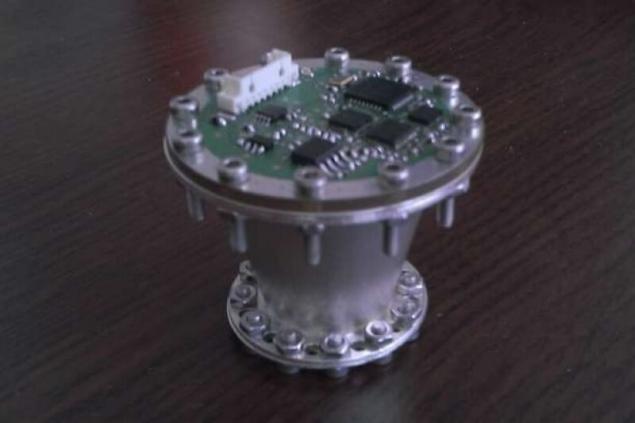
The prototype EmDrive, the German engineer Paul Cozily
Recently cholera scientific work has been published in the public domain. "Globally, the measured thrust. Some built engines in their garages, others in large organizations. They give traction, there is no great mystery. Someone thinks that there is some black magic, but it's not. Any normal physicist needs to understand how it works. If someone does not understand, it is time to change the work", — categorically said the British engineer. published
Source: geektimes.ru/post/280036/
On the one hand, this engine seems to be breaking the law of conservation of momentum, as indicated by many physicists. On the other hand, British inventor Roger Scheuer (Roger Shawyer) strongly believes in the performance of his EmDrive — and he has many supporters . Tested on the Earth seems to confirm the efficiency of the EmDrive.

The satellite company Cannae of the six CubeSat units.
It's time to put an end to disputes.
The final point in the debate intends to put Petta, Guido (Guido Fetta) — associate cholera and designer of another hypothetical engine Cannae Drive, which works on the same principle: generating microwaves and creating thrust in a closed loop without any exhaust.
17 Aug 2016 Guido Petta announced that he intends to run the experimental sample of the Cannae Drive to orbit and test it in action. Guido Petta is the Executive Director of the company Cannae Inc. Now the company Cannae Inc. licensed the technology for the electromagnetic motor of the firm Theseus Space Inc., which will lead to low-earth orbit satellite CubeSat.
Among the founders of the company Theseus Space — she Cannae Inc., as well as little-known companies LAI International, AZ and SpaceQuest.
Launch date yet to be announced. Perhaps the enthusiasts will be able to collect the money and build experimental apparatus in 2017.
The only task of this satellite is testing the engine Cannae Drive for six months. The satellite will try to move through the electromagnetic thrust Cannae Drive.
The Cannae Drive developers claim that their engine is able to generate thrust up to a few Newtons and "higher levels", which is better suited for use in small satellites. The engine does not need fuel, no exhaust.
The engine capacity of the satellite is CubeSat — no more than 1.5 units, that is, 10×10×15 cm power Source — less than 10 watts. The satellite will consist of six units.

The satellite company Cannae
Immediately after the successful demonstration in orbit, the company Theseus Space intends to offer a new engine to third-party manufacturers for use on other satellites.
According to the calculations of Cannae, more massive version of the electromagnetic motor weight of 3,500 kg is able to deliver a weight of 2000 kg at a distance of 0.1 light-years in 15 years. The total mass of such a device together with the cooling systems and other parts will be 10 tons.

Testing electromagnetic motor Cannae with helium cooling
If the efficiency of the engine is confirmed as a result of reliable, repeatable scientific experiment, scientists will have to find an explanation for this phenomenon. The Roger Scheuer suggests that the principle of operation of the engine based on the special theory of relativity. The motor converts electricity into microwave radiation that is emitted inside a closed conical cavity, which leads to the fact that microwave particles attach to the larger, flat part of the surface of the cavity, more pressure than in the narrower end of the cone, and thereby create thrust.
Scheuer is convinced that such a system is not contrary to the law of conservation of momentum.
Guido Petta offers a similar explanation in the description of U.S. patent No. 20140013724, mentioning the Lorentz force — the force with which the electromagnetic field acts on a point charged particle.
NASA researchers experiencing EmDrive, assuming that the thrust is created by the "quantum vacuum virtual plasma" particles that appear and disappear in a closed loop space-time. That is, the system is not really isolated, so it does not violate the law of conservation of momentum due to the effects of quantum physics.

EmDrive
Development EmDrive generally ignored by the scientific community, although some experiments are still being carried out. For example, in 2012 a group of Chinese physicists has published the results of the measurement of electromagnetic thrust of the engine, which amounted to 70-720 mn at a power of microwave emitter 80-2500 W, with measurement error less than 12%. This slightly exceeds the thrust of the ion engine.
Enthusiasts believe that if EmDrive works, it will become possible to create not only an efficient space engines and flying cars and ships, planes — all modes of transportation on electromagnetic propulsion.
Company Cannae — not the only one who wants to check the operation of the electromagnetic motor in space. German engineer Paul Kocyla (Paul Kocyla) has designed a small pocket EmDrive, and is now collecting money in the framework of a crowdfunding campaign. To launch a prototype into space on a mini-PocketQube satellite takes 24 200 euros. In three months managed to raise € 585.

The prototype EmDrive, the German engineer Paul Cozily
Recently cholera scientific work has been published in the public domain. "Globally, the measured thrust. Some built engines in their garages, others in large organizations. They give traction, there is no great mystery. Someone thinks that there is some black magic, but it's not. Any normal physicist needs to understand how it works. If someone does not understand, it is time to change the work", — categorically said the British engineer. published
Source: geektimes.ru/post/280036/
